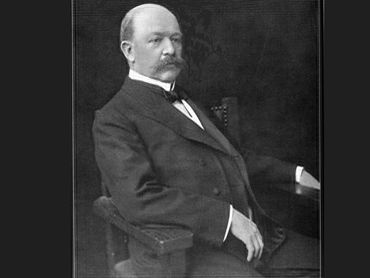Brookline's Vaudeville Days
American drama critic George Jean Nathan once wrote about vaudeville: “It is not that the old-time vaudeville show was a good show; it often, certainly, was anything but that. It was rather that it had an innocence and artlessness that made it appealing to men who prefer to take their diversion in an easy-come-easy-go fashion.” Vaudeville historian Frank Cullen simply called it the “people’s culture.” Indeed, in the days before motion pictures, radio, or television, vaudeville was the entertainment of choice. With Boston’s grand theaters nearby, Brookline was never going to be a major stop on the national circuit, but vaudeville was still a big part of the town’s entertainment. Dozens of vaudeville shows — amateur and professional, good and not-so-good — entertained Brookliners through the years. And as critic Sam Stanton has said, “The good thing about vaudeville was that if you didn‘t like the first act, there was always something different in the next.”
What was vaudeville? The better question might be what wasn’t it? If something could be performed on a stage, it was likely a candidate for a vaudeville show. Comedy routines, song and dance numbers, magicians, circus acts, xylophone players, ventriloquists, amateur thespians, knife swallowers — it was all part of the show. Most vaudeville performances included a bill of about a dozen acts with the worst scheduled to go either first or last. Audiences took the good with the bad, and most of the time, they loved it.
One of Brookline’s most prominent residents was also one of Vaudeville’s most prominent big shots. Benjamin Franklin Keith, a former circus candy butcher, worked his way up the show-business ladder, served as P.T. Barnum’s “fix-it man,” and eventually became a theater chain owner of his own. In the 123-seat Keith theater built on Washington Street in Downtown Boston, he created the first continuous vaudeville show. Patrons could buy a ticket for a dime any time of day and stay until they reached the point in the show where they came in — or stick around and see it all over again.
Despite living in a Colonial Revival home at the corner of Kent and Sewall Streets, Keith never brought vaudeville to his chosen town of residence. But Brookline saw some grand shows nevertheless. One of the biggest came in February 1908. Under the sponsorship of the Brookline Republican Club, an overflow audience of 1500 spectators, comprising “fashionable people from all sections of the town” according to the Brookline Press, attended the show under flags and bunting in the Town Hall auditorium. Rather than rely on amateur talent, the Republicans hired the J.W. Gorman Company of Boston to bring in their own stars — seasoned performers established with Boston and New York audiences. These included “two expert eccentric pedalists,” M.C. McGrath, “one of the finest banjo players in the country,” Miss Maud Dunn, “a petite comedienne and terpsichorean artist,” and the Le Favor Brothers — described as “acrobatic humorists.” A Celtic Skit by the team of Finley & Nolan apparently “kept the audience in roars of laughter for fully 15 minutes.” Summing up the evening, the Press added somewhat defensively that the show proved that “refined vaudeville can be given in Brookline with success."
Another large vaudeville show took place in May 1901 in Whitney Hall. The Brookline Chronicle introduced readers to the “effulgent histrionic stars" of the show. These included dancers in a “ripping ballet,” a song and dance duo, and an acting troupe. The Paul Thomas Orchestra wrapped things up by “discoursing sweetly on 15 instruments.”
There were also many amateur performers ready to stage vaudeville shows. In 1908, for instance, the local Paint and Powder Club was formed with more than 100 locals joining the cast. Talent included Miss Ella Chamberlain, “the well-known whistling soloist.”
In 1916, a special exhibition at Brookline Friendly Week featured both “motion pictures” and vaudeville for the price of 90 cents. In retrospect, this was an ominous sign for vaudeville. While the program included John Chapin singing songs and Henry De Ford Jr. doing a clog dance, its main attraction was The Heart of Maryland, a feature film set during the Civil War. Movies, not vaudeville, were now at the top of the bill.
For a while, vaudeville would share the nation’s marquees with "the pictures" but eventually Hollywood would give vaudeville the hook. Local theater owners found it far less trouble to turn on the lights and fire up the projector than to host shows with a dozen or more acts. In addition, while those early motion pictures may appear a bit uneven to modern eyes, they ushered in a far more sophisticated audience. Even in the silent era, the studios were turning out pictures of a quality that the perennial clog dancers and midget magicians of vaudeville no longer made the cut.
Still, to some extent, vaudeville would endure in a new form. Many early Hollywood stars including the Marx Brothers, Charlie Chaplin, and W.C. Fields got their break on the vaudeville stage, and by the time of the first talkies, such performers were making a smooth transition to film.
In future years, vaudeville’s legacy could be seen in everything from Singin' in the Rain to La La Land. Entertainment preferences themselves would also prove to be easy-come-easy-go. The movies would have only a few decades as the predominant “people’s culture” before it too would be overtaken — by a small box in the living room.



Above Left: B.F. Keith, Brookline resident and vaudeville baron. (Courtesy Brookline Historical Society)
Center: One of B.F. Keith's vaudeville halls in New York .
Above Right: Whitney Hall was a popular vaudeville hall. (Brookline Historical Society)